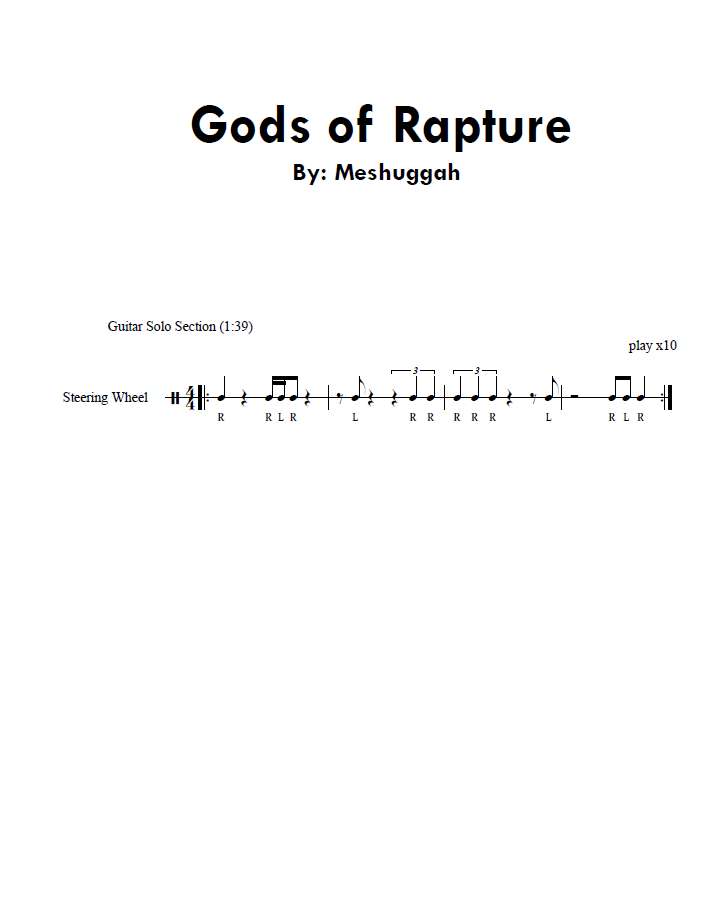Meshuggah – Gods of Rapture
Here’s the long-awaited second installment of the Steering Wheel Rhythms posts, and it’s actually a two-for-one special with Gods Of Rapture by Meshuggah! There are two sections of this song we’re going to break down the rhythms for: The syncopated section of the intro and then the repeated rhythm under the guitar solo as a bonus.
Note from our legal department: PatrickRFBlakley.com and its authors shall not be held responsible or liable for any loss, injury, or damages resulting from the use of these materials. Steering Wheel Rhythms, and all other musical notation available on this website, should not be used while driving or operating a motor vehicle of any kind. Performance of these articles is at your own risk.
An interesting thing that Meshuggah does with the above syncopation is that it repeats an uneven phrase while maintaining a 4/4 meter. This could be written in like 15/8 (or probably more appropriately 4/4+7/8), but it was obviously intended to stay in common time because it ends perfectly aligned with the overall 4/4 meter. This creates a very fun ostinato that repeats over the barline in a creative way! This is very much like a long displacement as well, it just keeps pushing forward to realign instead of reverting back! You’ll also notice the sticking is the ‘default’ natural sticking too, so drummers that are learning how natural sticking works can use this as a great example as well. Now, let’s check out the breakdown section with another repeated phrase, but this time it utilizes a lot more negative space!
This breakdown section is also done in an interesting way by using lots of rests between sporadic groupings of notes that add intensity as the breakdown progresses. We also have metric modulation occurring over the barline from measure two to three. This uneasy rhythm is enhanced by the rest on beat three to begin the triple-feel and the triple-feel also lacks a downbeat on the next beat three resulting in more unease to the listener. Even more still, the triple-feel is surrounded by more space on either side which creates even more tension. Not to mention an unnatural group of five notes adding to the effect. This rhythm choice is similar to using a diminished seventh chord for any music theory people, it creates unease and is done in a very effective way in this example! The best part about this phrase is that it repeats so many times under the intensifying vocals and guitar solo section on top of it. This pattern drives the music and demands the listener to stay grounded while the music escalates around it. Hopefully these examples are fun to play while jamming with the music, but they also be great tools for rhythm learning and counting! So have fun!



